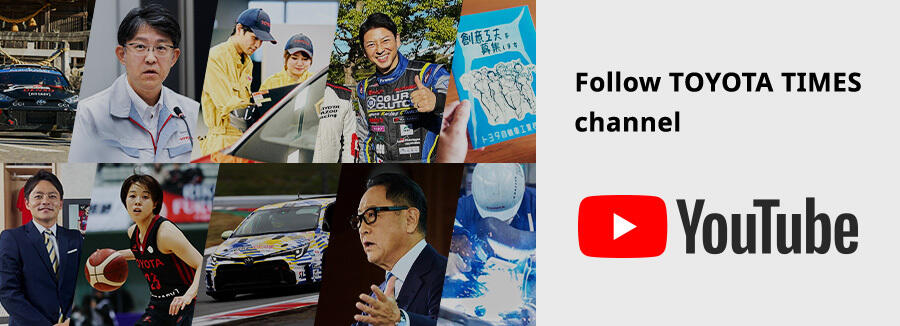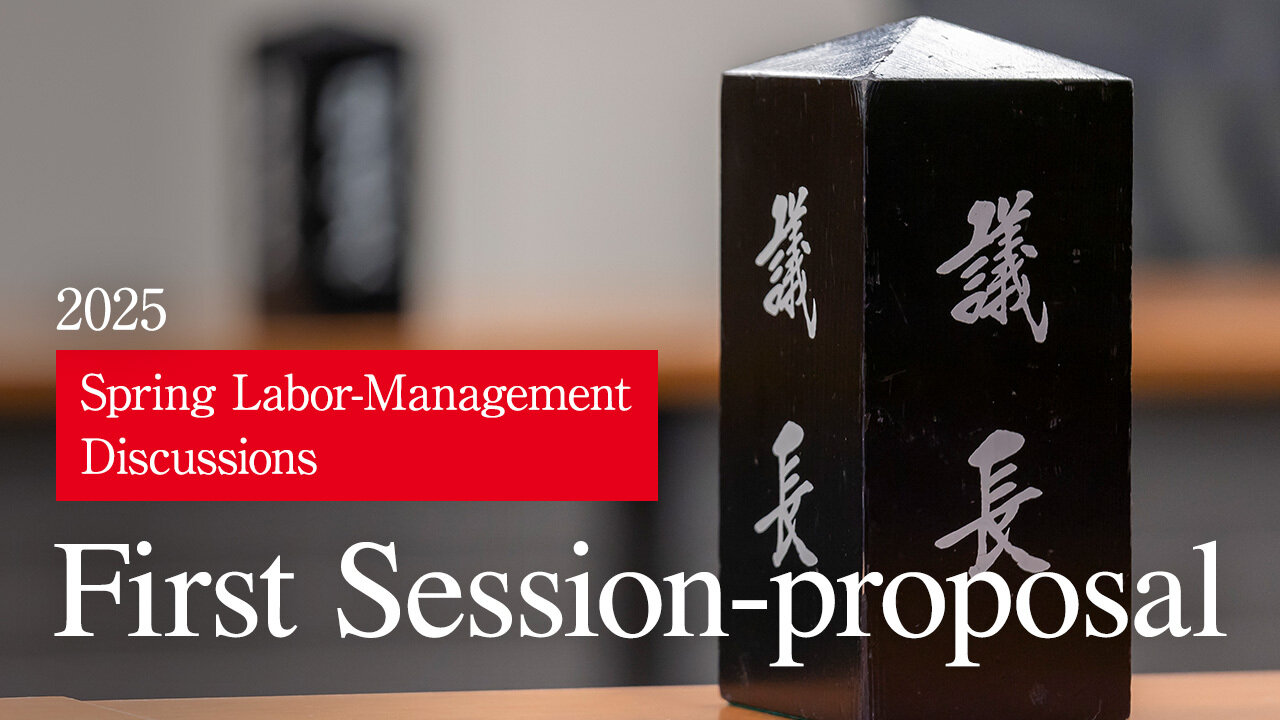
This year's labor-management discussions have gotten underway. How will they shape the future of Toyota and the automotive industry? What awaits on the other side of this candid dialogue?

On February 12, the Federation of All Toyota Workers' Unions began labor-management discussions with the company by presenting their demands.
These talks are not primarily about wages or bonuses.
The emphasis is on correctly understanding the environment in which Toyota and the auto industry operate and addressing issues through candid discussions.
The state of investment in human resources
To begin, let us recap what the two sides discussed in 2024.
“Even if it means slowing our pace, I believe that next year we must dedicate energy to strengthening our foundations and developing our capacity for tackling new challenges.” (President Koji Sato’s letter to employees at the end of 2023)
The year’s labor-management discussions and round-table sessions highlighted the reality of workplaces that continued to endure heavy burdens. President Sato pulled the andon* cord, designating the first half of 2024 as an “intentional pause” period to review work practices.
*Devices used to notify others about irregularities on the production line.
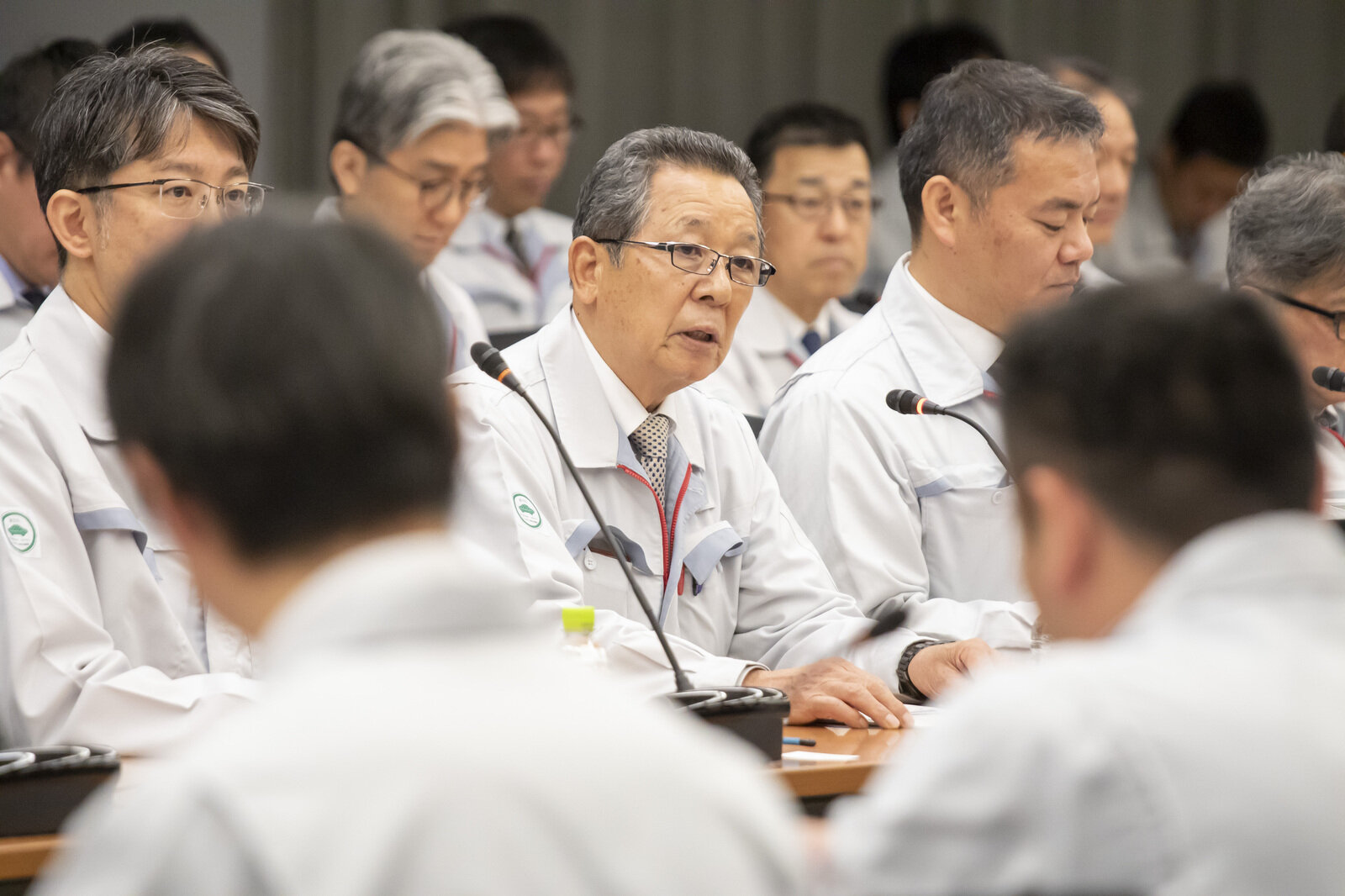
“We want to do away with uniform targets.” (Oyaji Mitsuru Kawai, first labor-management discussion, 2024)
The first labor-management discussion was held roughly two months after President Sato sent out his letter. Representatives shared voices from workplaces overly constrained by inflexible numerical targets, and front line staff concerned about maintaining safe work environments amid an overwhelming emphasis on meeting deadlines.
Oyaji Kawai, who chaired the discussions, noted that the people and worksites involved in carmaking were “not uniform” in terms of roles, experience, systems, and facilities. He stressed that “of even greater importance is a relationship between workers and management that allows for diverse and honest dialogue within each unit.”
“Given how long we have been tied down by figures that we cannot always reach, we would like to freeze the efficiency and productivity targets for a year.” (Production Group Chief Officer Takahiro Imura, second labor-management discussion, 2024)
The company made this declaration to tackle the issue of operations being constrained by inflexible management targets and development schedules. Toyota would make improvements by promoting an understanding of productivity and evaluation methods, and discussing what should serve as indicators of a healthy workplace.
“Workers tell us they lack opportunities to learn, but growth is something you have to seek out for yourself.” (Vice President Yoichi Miyazaki, third labor-management discussion, 2024)
As the two sides discussed revising evaluations and the focus on chasing numbers, Vice President Miyazaki’s reply to a question on career development served as a wake-up call. It sparked a debate about what individuals sought from their jobs and how they would continue to grow.
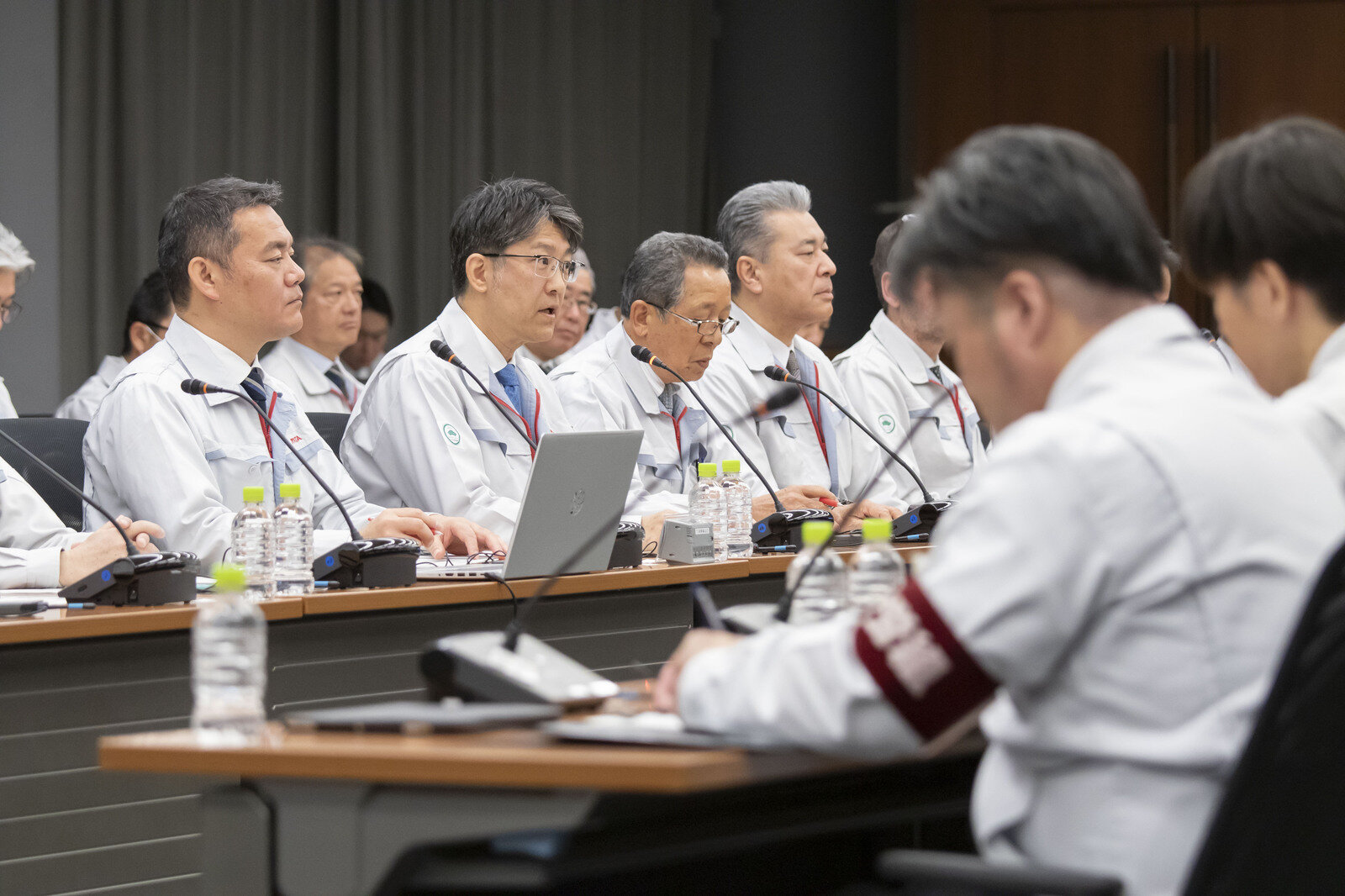
At the fourth session of talks, President Sato outlined a “comprehensive investment in human resources” consisting of three elements: enhancing the monozukuri environment, creating systems to support personal motivation and growth, and wages/bonuses to strengthen Toyota’s talent for the future.
Summing up the discussions, President Sato said, “I think that discussing investment in personnel is what paved the way for the most fundamental and important topic: motivation.”
Investment in human resources was discussed again at an expanded labor-management roundtable, which included suppliers and dealers. Roundtable sessions were also held in August and November. As the company’s workers and management explored ways to prevent further certification issues, the problem of inadequate workplace communication was also brought to light.
Working with our colleagues in the automotive industry
Which brings us to this year, with the culmination of the past 12 months of talks between labor and management now underway.
In laying out the union’s position, Chairman Keisuke Kito spoke of his commitment not just to his members, but also to all colleagues working in Japan’s auto industry.
Keisuke Kito, Labor Union Chairman
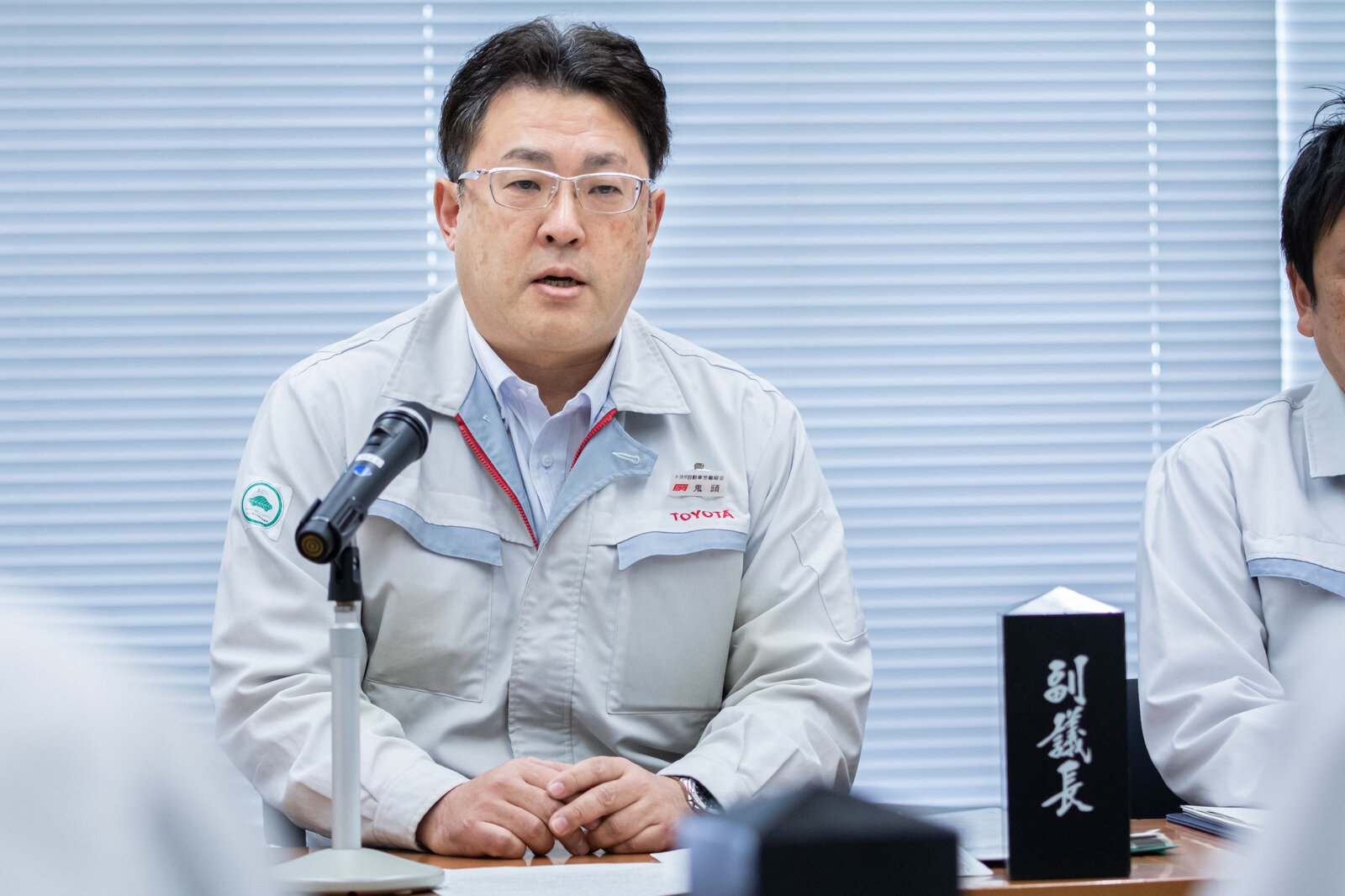
Looking back on the past year, a string of certification issues at Group companies were followed by the discovery of similar problems at Toyota.
Being involved in the automotive industry, I keenly felt the weight of responsibility, while also recognizing that we had caused a great deal of concern and inconvenience to our customers, suppliers, and other stakeholders.
As this past year showed us time and again, we must never forget that our work is made possible by the support of our customers, as well as all suppliers, dealers, and other colleagues in the industry.
If we look at these colleagues' situation, they are dealing with challenging conditions, including personnel shortages and rising costs.
On top of this, I feel that we continue to impose many inconveniences to serve our own needs, including recalls and frequent changes in production plans.
Under such circumstances, some have come to feel that Toyota alone is benefiting, and that the company can afford to be more flexible given its strong performance.
Once again, I believe that each of us working at Toyota must reflect on what has been important to us in getting here. Having done that, we must constantly consider what needs to change for our future and for our colleagues and turn that into concrete action.
This year’s demands are intended to reward the efforts of every union member in tirelessly tackling the challenges before them, as they strived to strengthen the foundations of their respective worksites and deliver as many vehicles to our customers as possible. They represent the consensus of our 68,000 members, based on discussions with their workplace teams.
However, we cannot achieve sustainable growth without working as one with our industry colleagues.
Building on our shared labor-management foundations, through these discussions, we hope to move toward a common goal, and chart a sure path to a brighter future for the automotive industry.
The new addition to this year’s agenda is “comprehensive investment in human resources” (last year there were three items: matters for discussion, wages, and bonuses).
“Beginning with these discussions, we would like to maintain a dialogue throughout the year on items linked to boosting the active engagement of all members and investing in the future,” said Chairman Kito.
These proposals were presented to Oyaji Kawai, who again chaired the discussions, having observed the genba for over six decades.
Oyaji Kawai
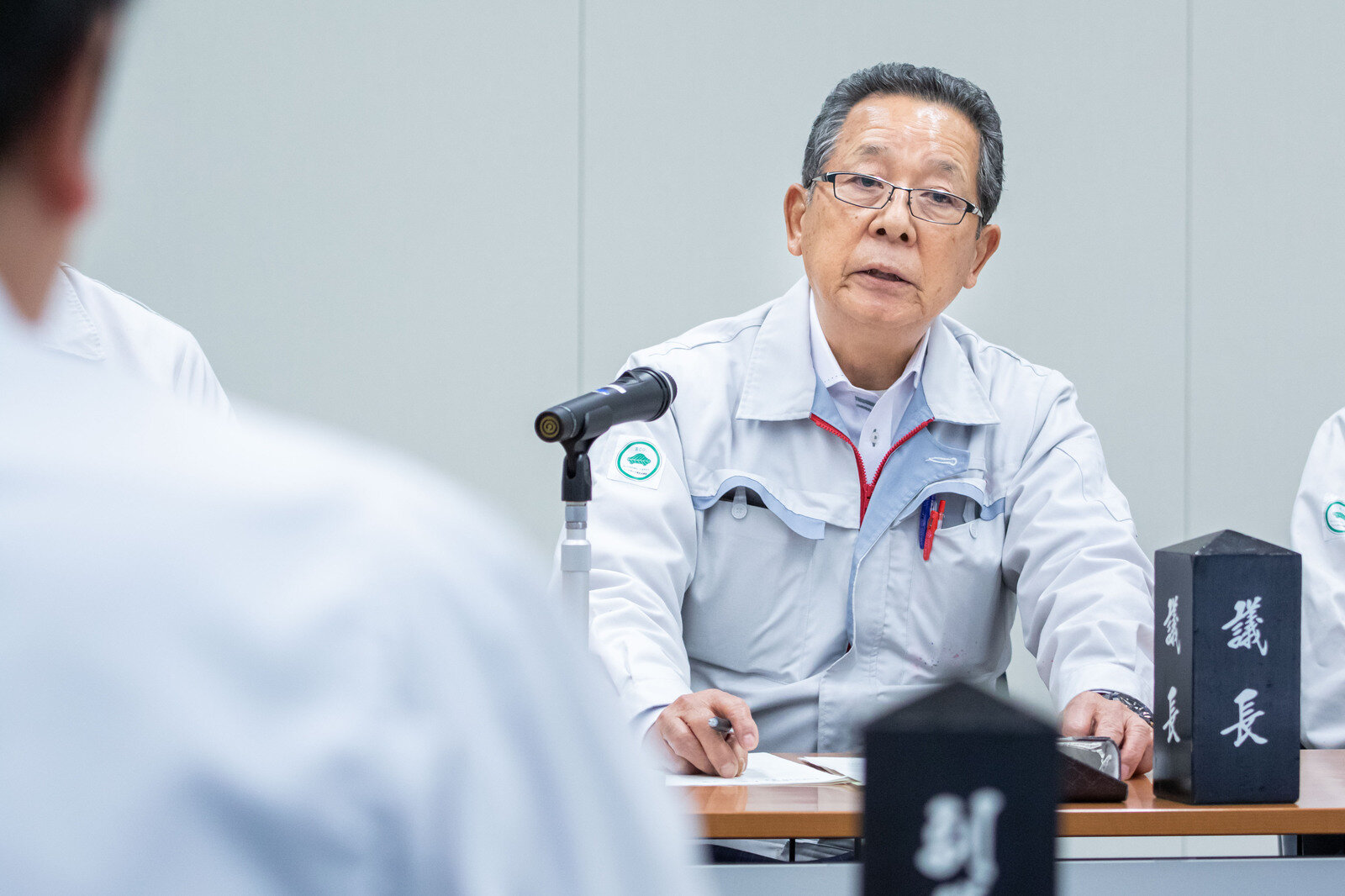
Despite repeated stoppages due to certification issues and quality checks, each and every member did what they could within their own role to deliver cars to our customers as soon as possible, and to take on new challenges as part of our transformation into a mobility company. For this, I would like to once again express my gratitude.
At the same time, the environment in which the auto industry operates is becoming increasingly difficult.
Although the talk of a once-in-a-century upheaval is nothing new, the fact that we are facing a life-or-death situation remains unchanged.
In order for us to survive and continue growing in such conditions, we must keep refining our products and working to improve productivity.
As part of efforts to strengthen our foundations, we have frozen target-based productivity and efficiency management, and individual worksites have undertaken a range of activities. However, these activities must all contribute to delivering more cars to customers in the future.
To ensure that is the case, I think it is important that we purposefully seek to make changes, rather than saying, “This is how we have always done it” or “This is the way things are.”
As labor union representatives, I hope you will be upfront in sharing your opinions, even those that are uncomfortable for the company to hear.
For the sake of our industry colleagues in the industry, it is important that we continue devoting ourselves to making cars.
As the things we make change, and we see ever-greater diversity in workers and ways of working, we must continue to create resilient workplaces and resilient genba which drive Toyota’s strengths in kaizen and personnel development. At the same time, we must strive to become a mobility company where those who follow in our footsteps—in five, ten, or fifty years—can enjoy their work and flourish. With these goals in mind, let us candidly and thoroughly discuss what both sides can do to overcome this difficult situation.
Chairman Kito echoed Oyaji Kawai’s comments, saying, “As a union, we would like to thoroughly discuss what can and should be done to empower every individual to work autonomously for the future.”
The union also suggested actions to be taken moving forward, adding, “We want to ensure that this opportunity leads to concrete action by individual members.”
How far will the labor-management discussion go from here, as they envision a future five, ten, or fifty years from now? As in the past, Toyota Times will be following every step.

